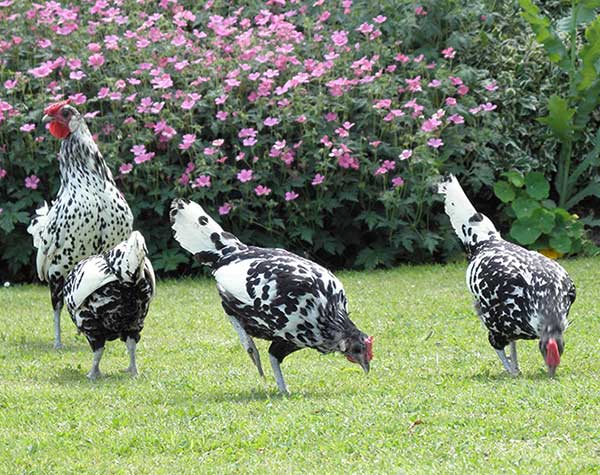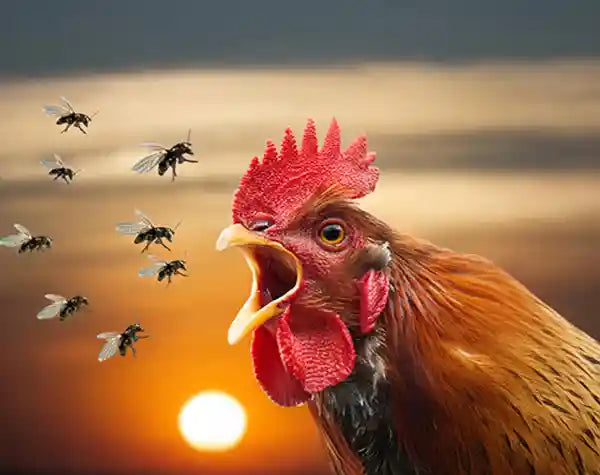Poultry Red Mite - Pesky Persistent Parasites
- Hens may avoid using the nest box or not go into the house at night if the coop is badly infested
- Grey dust similar to ash (mite faeces) around the crevices and under perches
- Active red mite inside or outside the house which glow in the light of a torch at night
- Birds are looking pale, jaundiced faces and wattles, and look anaemic
- Depressed birds, very lethargic, loss of weight
- Decreased egg production coupled with increased feed intake
- Dark dots and speckles on eggs – they may be blood spots or look closely you may see the speckles move!
- In extreme cases, feather loss and signs of dermatitis
- Never assume that red mites are the problem if you can’t find any physical signs of them at all – sometimes sick hens display similar symptoms, whatever the cause!
'Bite-size' Notes on Red Mites
What is a Poultry Red Mite?
- Dermanyssus gallinae is a highly prolific external parasite that loves to feed on birds.
- Capable of surviving up to nine months without feeding, it can be difficult to eradicate.
Feeding and Hiding Habits
- Mites primarily feed on bird blood but can also consume feathers, skin, and scales.
- Each feeding session can last up to 2 hours, after which mites hide in cracks and crevices to lay eggs.
- Red Mites are nocturnal, which makes the difficult to find during the daytime.
Impact on Poultry Health
- Heavy infestations cause the hens stress, lead to aneamia, reduced egg production, and can lead to death.
- Mites transmit diseases like fowl pox virus, Newcastle disease, fowl typhoid, and salmonella.
- In the worst cases, they can also bite humans, causing dermatitis.
Where Do Red Mites Live?
- Found in all types of poultry housing, including plastic and metal structures.
- Mites are drawn to areas close to their food source - the birds.
Identifying Red Mites
- Mites change colour from red (after feeding) to black and grey as time passes between feeds.
- Look for grey ash-like residue (mite faeces) around crevices in housing.
- Best time to check is at night with a torch.
Control and Eradication
- Red mites have a waxy, hard exoskeleton that retains moisture.
- Use strong degreasing agents to dissolve this layer, leading to desiccation and death - Smite Mite Liquid.
- This method is effective because mites cannot develop resistance to it.
- Regular treatment helps keep infestations under control.
Further Resources
- Visit our Red Mite Products page to find effective solutions.
- For more advice, see our Information Centre on How to Get Rid of Red Mite.
- - - -
The 9 Signs of Red Mite Infestation ©Flyte so Fancy 2024. Author: Anne Weymouth (Director, Flyte so Fancy Ltd). Reproduction of part or all of this text is only possible with the express permission of Flyte so Fancy Ltd.



